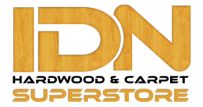Selecting the perfect engineered hardwood for a home involves more than just choosing a color. Understanding the different wood species, finishes, and core types can help homeowners make an informed decision that balances durability, aesthetics, and functionality. Each element plays a crucial role in determining how well the flooring will perform in various environments.
Choosing the Best Wood Species for Engineered Hardwood
The top veneer layer of engineered hardwood determines its overall appearance and durability. Oak remains one of the most popular choices due to its balanced grain pattern, strength, and resistance to wear. Hickory is another excellent option, offering enhanced hardness and a more rustic look. For those preferring a sleek and modern aesthetic, maple provides a smooth grain and lighter tones.
Exotic wood species, such as Brazilian cherry and acacia, add a unique and luxurious feel to any space. These options often come with a higher price tag but offer superior durability and rich, distinctive patterns. Homeowners should consider their lifestyle, foot traffic, and design preferences when selecting the best wood species for their needs.
Understanding Different Finishes and Their Impact
The finish applied to engineered hardwood affects both its appearance and longevity. Matte finishes have gained popularity for their ability to hide scratches and maintain a natural look. Satin finishes provide a slight sheen, balancing elegance with practicality, while high-gloss finishes enhance the wood’s richness but require more maintenance.
Wire-brushed and hand-scraped finishes offer texture and character, making them ideal for homes with an active lifestyle. These options help conceal minor imperfections and create a lived-in feel. Homeowners who prioritize easy maintenance should opt for UV-cured finishes, which offer superior protection against fading and surface damage.
Core Types and Their Influence on Durability
The core construction of engineered hardwood determines its stability and resistance to moisture. Plywood-core-engineered hardwood is one of the most common options, providing excellent durability and dimensional stability. It consists of multiple layers of plywood stacked in alternating grain directions, reducing the risk of expansion and contraction.
High-density fiberboard (HDF) core options offer a denser and more impact-resistant structure, making them ideal for areas with heavy foot traffic. A softer alternative is the softwood core, which provides a more budget-friendly option but may not withstand as much wear over time.
Choosing the right engineered hardwood requires balancing aesthetics, durability, and maintenance needs. By understanding the differences in wood species, finishes, and core types, homeowners can confidently select a flooring option that enhances their space while standing up to everyday use.
Read more:
Is Engineered Hardwood Good for Kitchens? Pros, Cons, and Best Practices
